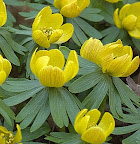I’m trying to decide what my next project should be. I’m still planning to continue with the monthly Take It Further challenge, but I also want to get back to some longer-term projects.
The debate is whether I finish up some of the old projects, or start something new – and if something new, what?
How do other people decide what to focus on? Time is a limited commodity – there’s only so much available for me to spend with needlework. I know that if I start doing something I don’t like, it will not get done. If I start a book that I don’t like, I can stop reading and give the book away, or return it to the library, but if I start a needlework project that I don’t like, I’m then left with a pile of thread and materials which reproach me every time I notice it.
I guess one question is how to decide how much of a commitment to make to a project. The Dorset buttons I was playing with earlier in the month – those take perhaps an hour, at most. A needlepoint pillow takes a couple of months for me.
The other issue is that there are so many things to try. I have great fun checking other blogs and seeing new ideas, new techniques to try.
Right now, there are two old projects I’d like to finish. One is a cutwork tablecloth, started perhaps 10 (or 15) years ago. This is about 48″ square.

If I focused on it for a month, I could probably finish it. It needs threads trimmed, mistakes fixed, etc. Probably the first thing I need to do is air it out to make sure no mildew has gotten into it.
The other item is to finish a needlework canvas that I had been working for a piano bench. The dragon is largely done, and what is left is the background. Either I’m in for a couple of months of basketweave, or I need to come up with something a bit more interesting to do for the background. Since it is intended for a bench, the background needs to wear well – no openwork here. And did I mention that I don’t currently have a piano bench to fit this canvas?

I may have gotten the canvas originally at Tapisseries de la Bucherie in Paris, but it has been so long that I’m not positive about that. It would have been at least 10 years ago, back when the US$ was worth a lot more.












